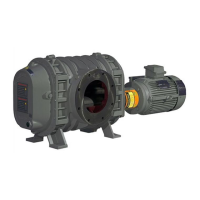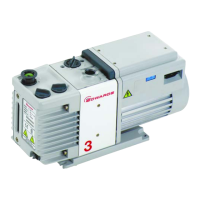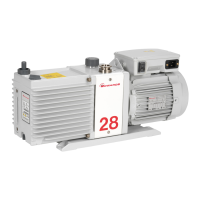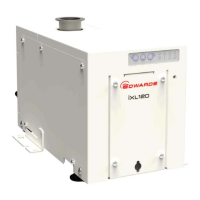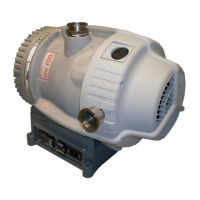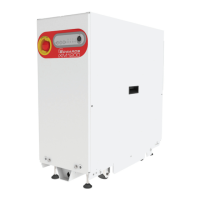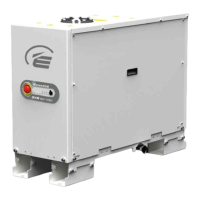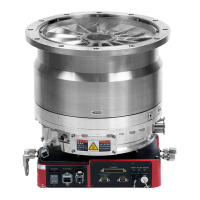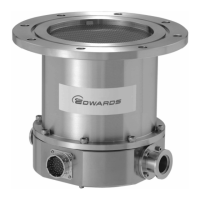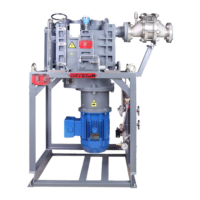Ensure the system to be evacuated and connecting lines are clean and free of weld splatter, dirt or grit. Foreign
debris entering the pump can cause failure and possibly damage the internal parts. Adequate traps, filters or
screens should be permanently installed if the potential for particles greater than 0.25 mm (10 microns) are
anticipated on entering the pump. Oil purification is required if a significant amount of particles greater then
0.25 mm (10 microns) are pumped. The inlet pressure must not exceed 1.013 bar (760 Torr).
All pipe lines should be as short as possible and be no smaller than the inlet to the pump. If long lines can not be
avoided, increase the pipe diameter by 50 % or more over the pump inlet diameter. Conductance of long lines must
be checked and the line sized large enough, or pumping speed of the system will be negatively impacted. When
connecting the pump to the system, provide a vertical pipe at least 610 mm (24.0 inch) long between the pump and
the system if the pump inlet is located below the system inlet. If the pump is located above or level with the system
inlet, provide an inverted “U” pipe to serve as a trap for system dirt and prevent migration of pump oil toward the
system inlet. Ensure all vacuum piping connections are tight. If an inline filter is being used, install according to
Figure 9. It is advisable to install a flexible connection between pump inlet and vacuum piping to reduce vibration
(See Figure 10).
A full-opening high vacuum valve is recommended to facilitate start-up and for checking the pump blank off pressure.
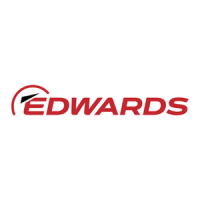
